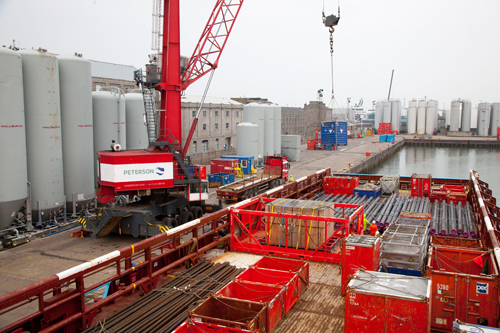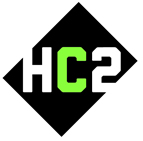 Deals decrease as operators wait for clarity over the future of the UKCS
Deals decrease as operators wait for clarity over the future of the UKCS
Oil and gas operators may be sitting on new investment decisions until the future of the North Sea becomes clearer, according to the latest report from business advisory firm Deloitte.
The report, which details drilling, licensing and deal activity across North West Europe over the third quarter of 2014 and was compiled by Deloitte's Petroleum Services Group (PSG), found that four deals were announced offshore UK. This is slightly down on the five transactions reported in Q2 2014 and substantially lower than the 14 registered during Q3 2013.
Derek Henderson, senior partner in Deloitte's Aberdeen office, said the drop in deals may be down to North Sea operators continuing to wait for further clarity about the future of the UK Continental Shelf (UKCS).
In particular, firms are waiting for more detail about the implementation of the Wood Review, including formation of the Oil & Gas Authority, and changes to the North Sea's fiscal regime. These measures are due to be detailed in Chancellor George Osborne's Autumn Statement on 3 December.
Henderson said: "The industry continues to wait and see how the future of the North Sea will take shape. This is a particularly interesting year for the UKCS as it goes through a period of transition. There remains much change on the horizon and, as a result, many companies will be biding their time.
"All eyes will be on the Chancellor's Autumn Statement, where industry will be looking for measures which support the challenges of operating in this mature basin. Having spoken to a range of investors in the North Sea*, we know that a fiscal regime which is more predictable, with a lower tax burden is key for improving investor confidence. Incentives which will encourage exploration and appraisal activity, as well as new entrants to the region, are also a vital part of the equation.
"Ultimately, the UKCS needs to be internationally competitive if it is to attract the investment it requires to boost its future prospects. We've made all of these views clear in our submission to the fiscal consultation. This is the most important Autumn Statement for some time now, as it could be the last chance to get the fiscal regime right."
Meanwhile, the report also found 11 exploration and appraisal wells were drilled during Q3, up on the seven reported in the previous three months. This is consistent with the 11 announced during the same period last year.
However, price pressure and access to finance have remained issues on the UKCS. A large number of North Sea assets are on the market from some of the larger operators. Smaller companies, in some cases with limited budgets, tend to be the most likely buyers, creating a price differential in the market and potentially stalling deal activity.
Graham Sadler, managing director of Deloitte's PSG, said that although the number of new wells drilled was higher this quarter compared with the previous three months, the figures have been at a steady low for some time.
He said: "While it's encouraging to see an increase in the number of new wells drilled this quarter, we are starting from a low base. Until we see the incentives required to encourage further exploration and appraisal activity, drilling could remain muted in the short to medium term.
"During this period of transition, costs have remained high for North Sea firms, access to finance has remained difficult and the price of oil has dropped to as low as US$95 this quarter. This combination of factors continues to make the economics of extraction more difficult for operators."
The report also found that one field had been approved on the UKCS in Q3 2014, down on the five reported the previous quarter. However, this was consistent with the same period last year when just one field received development approval.
Deloitte will release its report "Making the most of the UKCS: The oil and gas fiscal framework: Is it fit for purpose?" later this month. The report draws insight from interviews conducted with companies from across the oil & gas industry about their views on the North Sea's current fiscal regime.


 NYC-based
NYC-based  At present we are seeing lower oil prices as a function of softer demand growth in both Europe and China combined with recent output increases from OPEC, particularly Libya, together with the ongoing surge in US production.
At present we are seeing lower oil prices as a function of softer demand growth in both Europe and China combined with recent output increases from OPEC, particularly Libya, together with the ongoing surge in US production. Many non-U.S. companies may owe Uncle Sam federal income taxes if they conduct business on the US Outer Continental Shelf ("OCS"). And the IRS has indicated that it is actively seeking non US companies or individuals who may be performing a variety of activities for the energy industry on the OCS such as: providing services as contractors including seismic testing, drilling, repair, salvage, etc.; owners or operators of non US registered vessels that bareboat or time charter to others; or operating vessels to transport supplies or personnel between US ports and locations on the OCS.
Many non-U.S. companies may owe Uncle Sam federal income taxes if they conduct business on the US Outer Continental Shelf ("OCS"). And the IRS has indicated that it is actively seeking non US companies or individuals who may be performing a variety of activities for the energy industry on the OCS such as: providing services as contractors including seismic testing, drilling, repair, salvage, etc.; owners or operators of non US registered vessels that bareboat or time charter to others; or operating vessels to transport supplies or personnel between US ports and locations on the OCS. Helix Energy Solutions Group, Inc
Helix Energy Solutions Group, Inc Denmark is the European Union's (EU) only net exporter of oil. The Nordic state's oil exports totaled approximately 13.7 million barrels of oil equivalent in 2013. This is in stark contrast to the EU's only other significant oil producer, the UK, which became a net importer in 2004 and has experienced a steep decline in output since, as its historically productive North Sea fields reach extreme maturity. Denmark has maintained its status as a net exporter despite peak oil production in 2004. A strong shift towards wind power has seen a decrease in oil used for electricity generation while district heating systems traditionally fuelled by oil are now switching to natural gas and renewable sources.
Denmark is the European Union's (EU) only net exporter of oil. The Nordic state's oil exports totaled approximately 13.7 million barrels of oil equivalent in 2013. This is in stark contrast to the EU's only other significant oil producer, the UK, which became a net importer in 2004 and has experienced a steep decline in output since, as its historically productive North Sea fields reach extreme maturity. Denmark has maintained its status as a net exporter despite peak oil production in 2004. A strong shift towards wind power has seen a decrease in oil used for electricity generation while district heating systems traditionally fuelled by oil are now switching to natural gas and renewable sources. From a peak of 396 in 1996, numbers of wells drilled offshore UK fell to 164 in 2013, a low not seen since 1979. Development wells were down from 289 in 1998 to 120 in 2013. Exploration & appraisal drilling, on which offshore production ultimately depends, saw numbers fall from 224 in 1990 to 44 last year. Of these the key driver is of course exploration wells, down from 157 in 1990 to just 15 last year.
From a peak of 396 in 1996, numbers of wells drilled offshore UK fell to 164 in 2013, a low not seen since 1979. Development wells were down from 289 in 1998 to 120 in 2013. Exploration & appraisal drilling, on which offshore production ultimately depends, saw numbers fall from 224 in 1990 to 44 last year. Of these the key driver is of course exploration wells, down from 157 in 1990 to just 15 last year. December 2013.
December 2013.
 HC2 Holdings, Inc. ("HC2")
HC2 Holdings, Inc. ("HC2")